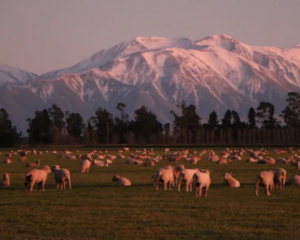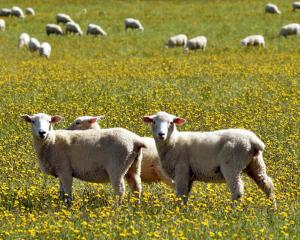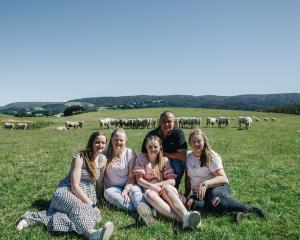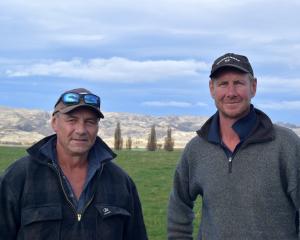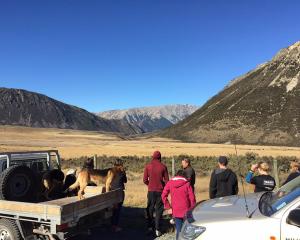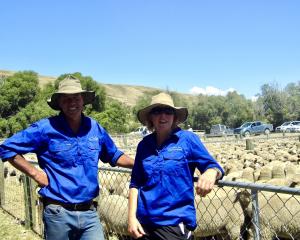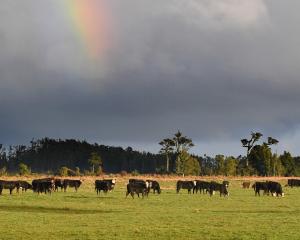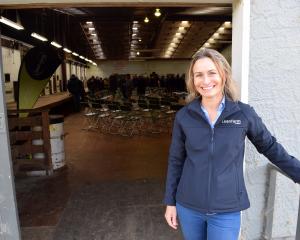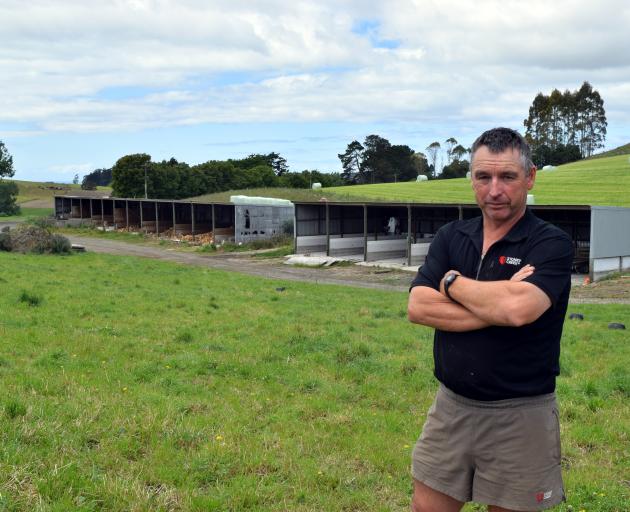
Fewer New Zealand pigs are being sent to market in New Zealand due to farmers reducing production or exiting the industry, NZPork says.
NZPork chief executive Brent Kleiss said 25,000 fewer New Zealand pigs were processed in the 12 months up to the end of September this year, a 4% fall on the previous 12 months.
One of the farmers to leave the industry is Foxhaven Farms owner Tony Fox in North Otago.
At the entrance to his farm in Airedale, northeast of Oamaru, a large wooden sign rests on a tree stump.
The sign includes the farm name and the image of a cow and a pig.
Mr Fox was raised on the farm and pigs had always been there, but a decision was made to close the piggery a year ago.
His parents, Ray and Lesley, established an outdoor piggery on the farm in 1960.
"They got a couple of sows when they got married."
The first concrete in the piggery was poured in 1972 to establish an indoor finishing facility.
His father continued to crush grain to feed the pigs.
In 1982, more sheds were built and the size of the piggery doubled to 60 sows.
Sow numbers increased to 90 by 1991.
A decision to bring in 8-week-old weaners from Canterbury to finish doubled production from 1998.
To house the weaners, a 13-bay shed was built in 1998.
Each bay could hold 40 pigs.
"It was probably one of the biggest sheds in North Otago when we built it."
He and his wife, Megan, bought the farm from his parents in 2005, about the same time a disease — postweaning multisystemic wasting syndrome — entered the farm from bringing in the weaners.
To eradicate the disease, all of the pigs on the farm were sent to the works in 2006 and 2007.
A decision was made to reestablish the piggery with 170 sows and to stop buying in weaners, which required more farrowing and weaner facilities to be built.
"That was a huge step, because we had just bought mum and dad out and we’d just killed everything, so we had no real income for 18 months."
About 1200 pigs had been run on the farm since 2015.
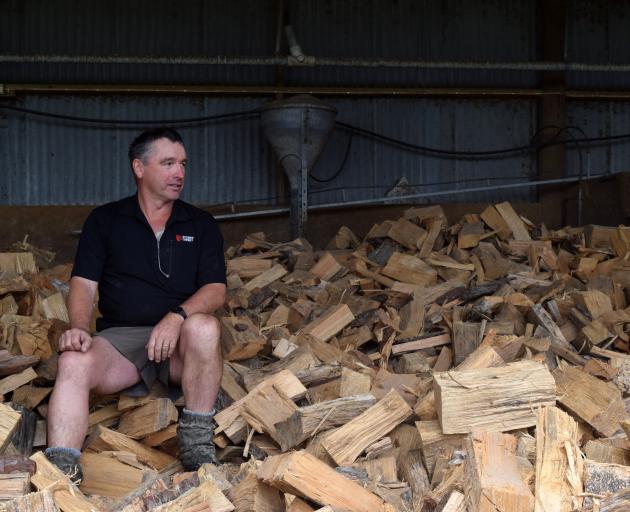
On the pros list was the regular cashflow the piggery provided.
The longer cons list included the grain price rising 50% to $600 a tonne about 18 months ago.
Another concern on the list was the Ministry for Primary Industries and the National Animal Welfare Advisory Committee proposing changes to how pigs are farmed in New Zealand.
The changes could require pigs to have more space in their pens, which would require them to reduce pig numbers or increase the size of the piggery.
"It was mind-bending the potential for what would need to be done."
A decision was made to exit the industry and now the main source of farm income was from dairy heifer grazing.
To start a new revenue stream, he had bought a logsplitter and was using the pig pens to season firewood.
He had no regrets about exiting the pig industry, despite the pork price schedule trending up and grain being cheaper than a year ago.
"My lifestyle is better now I don’t have that constant piggery work and worrying about this and that and having no time to yourself."
Pig farmer Ian Carter, of Hampden in North Otago, said he was questioning his future in the industry.
Closing down the piggery on his 335ha farm, Kevmarc Farms, was a regular talking point, he said.
He had been advertising for an experienced farm manager to run the piggery in a bid to step back from the daily operation of the farm.
No New Zealanders had applied for the position or anyone who had worked with pigs before.
"If you can’t get staff, how do you confidently spend money on facilities and meeting new regulations?"
His sons had forged their own careers, so the future of the piggery was unclear if he was unable to find a manager.
"It is hugely frustrating because the industry has done us well. I’ve been in the industry 35 years and everything I own is because of pigs."
To make the piggery easier to manage, he decided to drop his sow numbers by 15 about 15 months ago.
The move resulted in a drop in annual production of up to 8%, or about 25 tonnes less pork, entering the market.
New Zealand pig farmers exiting the industry might be increasing demand and pork schedule prices for his pork but there could be ongoing consequences for the sector.
A critical mass of pig farmers was required for the sector to operate.
Fewer pig farmers in New Zealand could result in businesses providing services to the industry leaving the market due to softer demand.
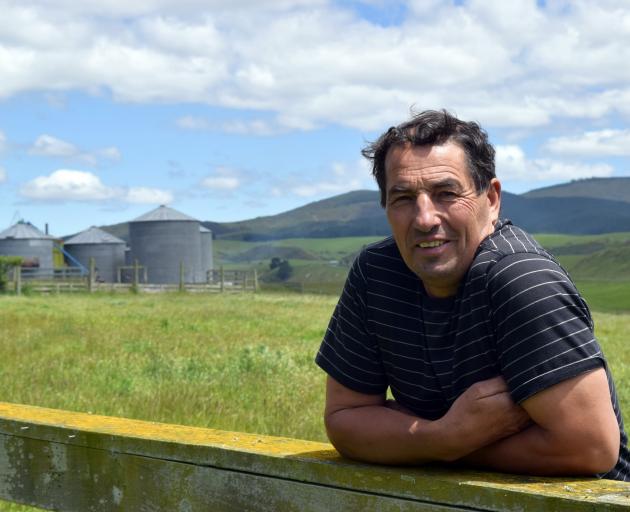
"We become less efficient."
A reduction in domestic pork production would increase a reliance on imported pork, which already had more of the market share and did not have to comply with New Zealand welfare regulations.
In a Southern Rural Life story in May last year, Bloem Farm owner Pieter Bloem, a second-generation pig farmer on Otago Peninsula in Dunedin, warned changes to code of welfare for pigs would result in the closure of piggeries in New Zealand.
Speaking to Southern Rural Life last week, Mr Bloem said he had closed his piggery due to the regulatory uncertainty.
"We couldn’t do any investment."
His sow herd had been among the most productive in New Zealand, producing more than 30 weaners per sow a year.
He began depopulating the piggery about this time this year and had four pigs remained.
Another reason for closing was being near retirement age, struggling to find staff and the constant stress of the job.
"I had two days off last year ... you don’t realise how burnt out you are."
He hoped the new government would reduce some of the regulatory uncertainty for the sector.
Havoc Farm Pork’s Dunedin factory closed in September this year, ending a 20-year association with the city.
After the factory closed, Havoc co-owner Linda McCallum-Jackson told Southern Rural Life editor Sally Rae, the reasons for the closure included the economic impact of imported pork and increase in costs including compliance, feed and labour.
Mr Kleiss said he was aware of reports that some retailers were experiencing a shortage of fresh pork this year.
"We anticipate the supply of pigs may improve in the next few weeks but we are closely monitoring the situation."
Some farmers had made the difficult decision to leave the industry mostly due to regulatory uncertainty.
"The unlevel playing field with pork imports produced to lower standards flooding the country, staff shortages, and inflationary pressures in the past 18 months.
“The sector is particularly concerned about the ongoing review of the pigs code of welfare. We’re seeing the results of a long period of uncertainty where things have dragged on without a decision."
NZPork hoped the new government would work quickly on providing the certainty and support needed for farmers and others to confidently invest in the sector’s future.
"Ultimately, the new government needs to back a thriving and sustainable domestic pork sector operating to stringent standards by ensuring incoming regulations are practical and are not a barrier to New Zealand pig farmers competing with imports.”
Associate Agriculture Minister Andrew Hoggard said he had been aware of the challenges pig farmers were facing and would seek a briefing from officials once his ministerial delegations were confirmed.


